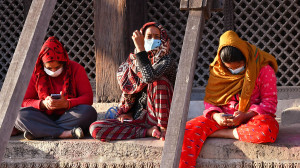National
Glacial progress on 10 BRI projects
At Nepal’s request, 10 projects were agreed for execution. But even their pre-feasibility studies are incomplete.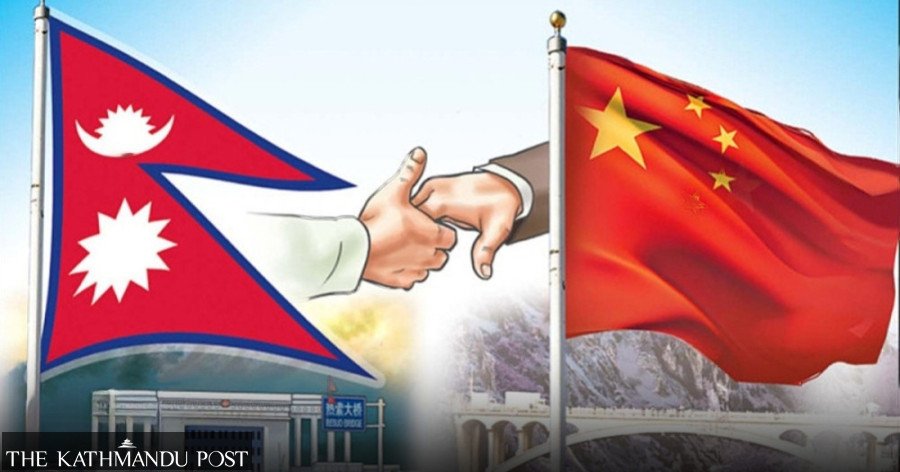
Anil Giri
The Chinese are known to carry out mega projects at lightning speed. But in Nepal, projects tend to get bogged down.
As regards Chinese President Xi Jinping’s flagship Belt and Road Initiative projects in Nepal, it is hard to say if the BRI has fallen victim to Nepal’s lethargic approach, to broader geopolitics or China’s own sluggish approaches—or could it be a mix of them all?
Six months into the signing of the framework for the BRI cooperation during the official visit of Prime Minister KP Sharma Oli’s to China, the two sides have only reached a stage of “concept paper” on individual projects. In the first week of December last year, the two had agreed to execute 10 projects focussed on building trans-Himalayan connectivity.
As per Nepal’s proposal, 10 different projects under the BRI were agreed for execution. But even the pre-feasibility studies of most of these projects are incomplete.
The 10 projects were—Tokha-Chhahare tunnel road; Hilsa-Simkot road project; Kimathanka-Khandbari road and bridge; Jilong-Kerung-Kathmandu cross-border railway; Amargadhi City Hall in Dadeldhura; Jilong-Kerung-Rasuwagadhi-Chilime 220KV transmission line; Madan Bhandari University; Kathmandu Scientific Centre and Science Museum; China-Nepal Friendship Industrial Park in Damak; and the Jhapa Sports and Athletics Complex.
China is currently conducting a feasibility study of the Jilong-Kerung-Kathmandu cross-border railway. The two sides have also exchanged letters to expedite the Tokha-Chhahare tunnel road and Hilsa-Simkot road project.
Besides these three ready-to-go projects, the concept papers outlining various aspects of developing other projects have been shared with the Chinese side for consideration. If approved, a pre-feasibility study will follow.
Through the Ministry of Foreign Affairs, the concept notes of almost all projects were sent to the Chinese side, Dhaniram Sharma, head of the International Economic Cooperation Coordination Division at the Ministry of Finance, told the Post. The ministries that are undertaking the projects had sent the concept notes to the Chinese side through the Ministry of Foreign Affairs, he said.
Officials at the foreign ministry said Nepal sent the concept papers of the eight projects to China over four months ago. “We await their response,” a foreign ministry official said.
Sharma also confirmed that the Nepali side has yet to get China’s comments on the concept papers. Once the concept note is approved, each identified project reaches the stage of pre-feasibility study.
Then, after concluding the pre-feasibility study, the two sides exchange letters to develop the projects by agreeing on the financing modality.
Nepali officials have been taking up these issues in meetings with their Chinese counterparts, according to Sharma.
“In the latest meeting between the foreign secretary and the Chinese ambassador, we decided to smoothly implement the projects, and some progress towards this end has been made,” a senior foreign ministry official said. “The meeting also reviewed the status of BRI as well as seven other projects. The detailed project report [DPR] of the stadium will be completed soon.”
The framework for BRI cooperation signed in Beijing last year is a renewal and continuation of a memorandum of understanding signed in 2017. In the latest deal, both sides agreed on “aid financing modality” to fund the projects. “Aid financing” refers to both grants and loans but Nepali officials, experts, ministers and leaders interpret it in a different way.
At the second meeting of the Mechanism for Facilitation on the Implementation of Nepal-China Cooperation Programmes and Projects between Nepal and China held on May 23, both sides reviewed the status of ten projects to be executed under the BRI, as well as a few others.
The two sides, led by Foreign Secretary Amrit Rai and Chinese Ambassador to Nepal Chen Song, respectively, reviewed progress of Nepal-China economic and development cooperation programmes and projects and identified measures to expedite their timely and effective implementation, according to the foreign ministry. The meeting agreed to expedite some BRI projects in the near future.
Nepal and China have already signed and exchanged a letter to expedite the Tokha-Chhahare tunnel road. The Ministry of Finance has subsequently sent a request to Beijing to carry out its pre-feasibility study. The Chinese side, however, has insisted on conducting an environment impact assessment of the project before the pre-feasibility study.
The Supreme Court’s January 15 decision preventing the execution of development projects in protected areas has also added uncertainty to the project, according to officials. Separately, the feasibility study of Jilong-Kerung-Kathmandu cross-border railway is underway.
Nepal and China have also exchanged a letter to construct the 96-kilometre Hilsa-Simkot road as a part of the Karnali Corridor. Kathmandu has also requested Beijing to build a motorable bridge on the Nepal-China border there. Officials from both finance and foreign ministries said that they now await China’s call for conducting the pre-feasibility study of these projects.
The concept notes for construction of Kimathanka-Khandbari road and bridges, Amargadhi City Hall in Dadeldhura, Jilong-Kerung-Rasuwagadhi-Chilime 220KV transmission line, Kathmandu Scientific Centre and Science Museum, China-Nepal Friendship Industrial Park in Damak and Jhapa Sports and Athletics Complex are under the Chinese side’s consideration.
There have been positive talks on reaching an early deal on the transmission line to be built with a Chinese grant, said an official at the energy ministry. The Chinese side had agreed to carry out a repeat study of the proposed transmission line so that it can be developed to their standard.
However, it is also going at a snail’s pace, the official said. As per the proposal, only 26 kilometres of the transmission line falls in Nepal while a 97-km-long stretch will run through the Chinese territory. Beijing has appointed China Power as its design consultant.
On the construction of the Madan Bhandari University of Science and Technology, as the Chinese side did not like the location in Chitlang, Makawanpur, the Nepali side has suggested an alternative site at Panchkhal, Kavre.
Construction of the university in Chitlang has already started and some Masters and PhD courses are currently being taught there. Discussions are now underway to expand the facilities, including in Kavre, with Chinese grants.
Similarly, work on the China-Nepal Friendship Industrial Park in Damak, Jhapa—Oli’s home district—has not moved forward.
Although Oli laid the foundation stone for this project in March 2021, its Project Development Agreement (PDA) is yet to be finalised. This project, supposed to be funded by China’s private sector, is being overseen by Investment Board Nepal.
Issues of land acquisition, tax exemption and geopolitical concerns are weighing down the project’s implementation. Recently, Chinese ambassador Chen also visited the industrial park in the eastern plains. The two sides agreed to sign the Project Development Agreement for the China-Nepal Friendship Industrial Park as soon as possible, in order to facilitate early construction and operation, said the joint communiqué issued after Oli’s visit in December last year.
Even though both sides have agreed to sign the PDA, it’s not a done deal. The Investment Board has decided to go ahead with the PDA even as the deadline for it has passed.
On the occasion, Ambassador Chen expressed his confidence that the construction of the park would soon begin and stressed that the project would strengthen Nepal-China relations.
Similarly, Park Chairman Govinda Thapa said that most of the work on the park is over and the remaining tasks would be finished soon as well.
Other Projects like Amargadhi City Hall in Dadeldhura, Kathmandu Scientific Centre and Science Museum, China-Nepal and Jhapa Sports and Athletics Complex, have also made tangible progress.
Implementation of BRI projects is always high on priority of high-level visits between Nepal and China. During the recent China visit of former President Bidya Devi Bhandari, several Chinese leaders and officials discussed the need to build BRI projects to high standards.
Deputy Prime Minister and Minister for Finance Bishnu Paudel, who is visiting China later this month, is also going to take up the matter with Chinese officials, said officials.
“We are coordinating with the concerned ministries to expedite the implementation of the projects,” said Krishna Prasad Dhakal, spokesperson for the Ministry of Foreign Affairs. “Gradually, they will go into implementation.”
He said he has no updates on the status of BRI-related projects.
India views BRI as a vehicle to promote Chinese interests around the world. It shares thousands of kilometres of disputed border with China. In the recent India-Pakistan clash over the Pahalgam terrorist attack, China visibly supported Islamabad.
The planned BRI projects in Damak, Jhapa, is close to India’s ‘chicken’s neck’ Siliguri corridor. New Delhi has historically been averse to the Chinese descending to Nepal’s south with development projects.
During Oli’s visit to the north last year, the current UML-Nepali Congress coalition faced pressure not to press ahead with BRI implementation. There are analysts in Nepal who believe Kathmandu should carefully balance its relationship with Beijing and New Delhi to benefit from both and not antagonise either.
Arun Subedi, an observer of Nepal’s relations with its neighbours who advised prime minister Sher Bahadur Deuba on foreign relations until December 2022, says Kathmandu should respect India’s geopolitical concerns especially in its relationship with Beijing.
Oli’s December visit to China came against the tradition of Nepali prime ministers preferring India for their first foreign trip. In nearly a year since taking office, Oli’s visit to the southern neighbour has yet to be scheduled despite preparations in both capitals to make it happen within July. Many in India attribute this delay to Oli’s purported pro-China tilt.
“India doesn’t want any activities that raise security concerns for it along Nepal’s eastern border. Just as we’ve reassured China that Nepal’s territory won’t be used against them, we must also offer similar assurances to India,” Prakash Sharan Mahat, the Congress spokesperson and a former foreign minister, told the Post in a recent interview. “Without compromising our sovereignty, territorial integrity, and independence, we need to be mindful of their security sensitivities.”




 10.12°C Kathmandu
10.12°C Kathmandu

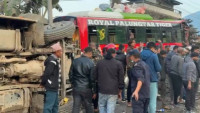



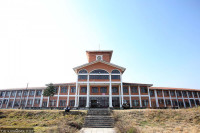


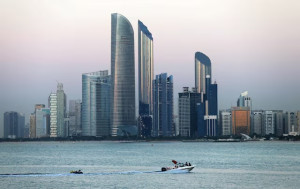

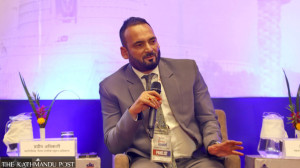


%20(1).jpg&w=300&height=200)

